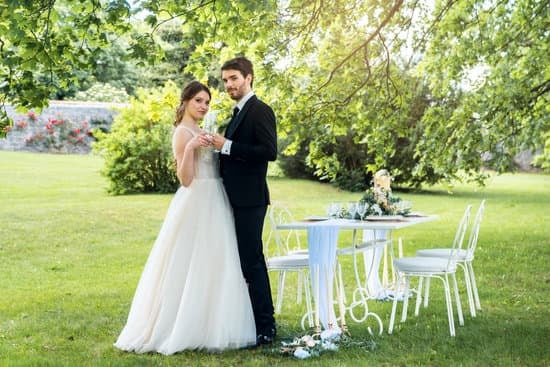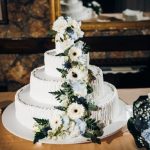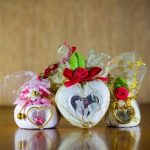The wedding of Queen Victoria to Prince Albert is a timeless tale of love and romance that has captured the hearts of many. The union between Queen Victoria and Prince Albert of Saxe-Coburg and Gotha is often regarded as one of the most legendary royal love stories in history. Their marriage set the standard for romantic partnerships within the royal sphere, and its influence can still be felt today.
Queen Victoria and Prince Albert’s love story began with a chance meeting that blossomed into a deep connection. Despite coming from different backgrounds, their shared values, interests, and affection for one another brought them closer together. Their courtship was marked by genuine devotion and mutual respect, laying the foundation for a lasting relationship.
The proposal between Queen Victoria and Prince Albert was a momentous occasion filled with heartfelt emotions. Prince Albert’s romantic gesture captured Queen Victoria’s heart, leading to her joyous acceptance. As news of their engagement spread throughout the kingdom, excitement grew for what would become a grand royal wedding fit for a queen.
The Royal Courtship
Queen Victoria and Prince Albert’s love story is one of the most well-known and celebrated romances in royal history. The couple first met in 1839 when Prince Albert, a German prince, visited England. Queen Victoria was immediately taken by his charm, intelligence, and good looks. Despite coming from different backgrounds and facing initial opposition from some members of the royal court, their love blossomed quickly.
Their courtship was marked by letters filled with affectionate words and declarations of love. Queen Victoria often wrote about how much she admired Prince Albert’s character and how he brought happiness into her life. They shared a passion for music, art, and literature, which further strengthened their bond. It was clear to those around them that they were genuinely in love and meant to be together.
Prince Albert’s proposal to Queen Victoria was a heartfelt moment that ultimately sealed their fate as a couple. On October 15, 1839, Prince Albert proposed to Queen Victoria at Windsor Castle. He presented her with an engagement ring featuring a snake motif-a symbol of eternal love in Victorian times.
Overjoyed by his proposal, Queen Victoria accepted without hesitation. Their engagement was met with joy and excitement by the public, who eagerly awaited the grand wedding that would follow the union of these two young royals who were clearly deeply in love.
The Proposal
After a courtship filled with deep admiration and affection, Prince Albert finally made his romantic gesture to Queen Victoria with a proposal of marriage. The love between the young couple had bloomed despite initial doubts and opposition from some members of the royal court. However, their connection only grew stronger over time, paving the way for this momentous occasion in royal history.
Prince Albert’s proposal to Queen Victoria was a sincere and heartfelt declaration of his commitment to her. It is said that he presented her with an engagement ring featuring an emerald serpent – a symbol of eternal love and wisdom.
The proposal took place on October 15, 1839, at Buckingham Palace, where Prince Albert got down on one knee and asked for Queen Victoria’s hand in marriage. Overwhelmed with emotion and joy, Queen Victoria gladly accepted his proposal, solidifying their bond in front of witnesses who were moved by the genuine display of love between the two.
The acceptance of Prince Albert’s proposal marked the beginning of a partnership that would not only define their personal lives but also have significant implications for British monarchy. As they embarked on their journey towards marriage, it was clear that the wedding of Queen Victoria would not just be a union between two individuals but a pivotal event that would set standards for royal weddings to come.
The Wedding Planning
Queen Victoria’s wedding to Prince Albert was not just a simple union of two individuals; it was a grand affair that required meticulous planning and attention to detail. The wedding planning process captured the essence of Victorian opulence and set the tone for future royal weddings. From choosing the venue to selecting the floral arrangements, every aspect of the event was carefully curated to reflect the grandeur of the occasion.
To ensure that Queen Victoria’s wedding would be nothing short of spectacular, the royal couple enlisted the help of renowned architects, designers, and florists. The venue chosen for the ceremony was the Chapel Royal at St. James’s Palace, a location steeped in history and tradition. Elaborate decorations adorned the chapel, transforming it into a breathtaking setting fit for a queen and her prince charming.
In addition to selecting a fitting venue, Queen Victoria and Prince Albert also had to decide on key aspects such as the guest list, menu for the reception, and entertainment for their esteemed attendees. The couple spared no expense in creating an unforgettable experience for all who were fortunate enough to witness their nuptials. With every detail meticulously planned and executed flawlessly, Queen Victoria’s wedding became an event that would be remembered for generations to come.
The Wedding Day
On the wedding day of Queen Victoria and Prince Albert, all eyes were on the young couple as they exchanged their vows in a grand ceremony fit for royalty. The event took place on February 10, 1840, at the Chapel Royal of St. James’s Palace in London. The guest list included dignitaries and royals from across Europe, making it one of the most prestigious weddings of the time.
The ceremony itself was a spectacle to behold, with Queen Victoria donning a white satin gown adorned with lace and a wreath of orange blossoms in her hair. Prince Albert looked dashing in his military uniform as they stood before the Archbishop of Canterbury to exchange their vows. The chapel was filled with music, flowers, and candlelight, creating a romantic atmosphere befitting such an occasion.
Following the ceremony, the newlyweds embarked on a procession through the streets of London, where cheering crowds gathered to catch a glimpse of the royal couple. The celebrations continued with a lavish reception at Buckingham Palace, where guests were treated to a banquet fit for royalty.
The wedding of Queen Victoria set a new standard for grandeur and opulence in royal weddings, solidifying her status as an iconic figure not only in British history but also in the world of fashion and tradition.
- Highlights from the wedding day:
- Exchange of vows at Chapel Royal
- Queen Victoria’s white satin gown
- Prince Albert’s military uniform
- Procession through London streets
- Lavish reception at Buckingham Palace
The Dress
Queen Victoria’s wedding gown has left a lasting impact on bridal fashion, setting the standard for royal weddings to come. Designed by the popular court dressmaker, Mrs. Bettans, Queen Victoria’s gown was an exquisite creation of white satin and lace.
The gown featured a fitted bodice, full skirt, and intricate floral motifs made of handmade Honiton lace. Queen Victoria’s choice to wear white on her wedding day was seen as unconventional at the time, but it was a decision that would shape bridal fashion for generations to come.
The iconic silhouette of Queen Victoria’s wedding gown became the quintessential image of a bride, influencing the choice of attire for countless women around the world. The symbolism behind wearing white as a symbol of purity and innocence became deeply ingrained in Western culture thanks to Queen Victoria’s sartorial choice on her wedding day. Her influence on bridal fashion was so profound that even today, many brides opt for white gowns inspired by Queen Victoria’s timeless elegance.
Not only did Queen Victoria’s wedding gown set a trend for white bridal attire, but it also popularized the use of delicate lace in wedding dresses. The intricate detailing and craftsmanship of Queen Victoria’s lace veil and train became a symbol of luxury and sophistication in bridal fashion. This emphasis on fine detailing and ethereal fabrics continues to be a hallmark of bridal design, echoing the enduring legacy of Queen Victoria’s impactful choice of wedding attire.
The Guests
Queen Victoria and Prince Albert’s wedding was not just a union between two individuals, but a grand affair attended by various royal and noble guests from across Europe. The guest list for the wedding of Queen Victoria included dignitaries, rulers, and royals from different countries, reflecting the importance and influence of the British monarchy at that time.
Among the prominent attendees were Victoria’s uncle King Leopold I of Belgium, her cousin Prince George V of Hanover, and several other members of European royalty.
Royal Dignitaries
The wedding of Queen Victoria attracted a significant number of royal dignitaries who arrived in London to witness the historic event. Representing their respective countries, these royals added to the grandeur and significance of the ceremony. The presence of foreign monarchs at the wedding highlighted the alliances and relationships that Queen Victoria had forged with other ruling families across Europe.
Noble Guests
Alongside the royal dignitaries, a multitude of noble guests also graced the occasion with their presence. Members of British aristocracy, as well as nobles from various European countries, came together to celebrate Queen Victoria’s marriage to Prince Albert. The gathering of such esteemed individuals further emphasized the prestige and splendor surrounding the wedding festivities.
The diverse array of guests at Queen Victoria’s wedding not only symbolized diplomatic relationships but also showcased the union between different royal houses. The presence of both royal dignitaries and noble guests added an air of sophistication and elegance to the event, making it one of the most memorable weddings in history.
The Legacy
Creating a Tradition
Queen Victoria’s wedding to Prince Albert in 1840 set the standard for royal weddings for generations to come. The grandeur, elegance, and attention to detail of their ceremony became the benchmark against which all royal weddings were measured. From the choice of venue to the guest list and even the design of the wedding dress, Queen Victoria’s nuptials established traditions that would be emulated by future members of royalty.
Influence on Wedding Fashion
One of the most enduring legacies of Queen Victoria’s wedding is her iconic white satin gown. Prior to her marriage, brides in Western cultures wore dresses in a variety of colors. However, Queen Victoria’s choice to wear white symbolized purity and innocence, setting a new trend that continues to this day. Her gown, with its intricate lace details and beautiful design, has inspired countless bridal designers and influenced bridal fashion for centuries.
Royal Wedding Celebrations
The celebrations following Queen Victoria’s wedding were extravagant and luxurious, setting the tone for post-wedding festivities for future royal couples. Banquets, balls, and parties were thrown in honor of the newlyweds, attended by nobles from across Europe.
The revelry lasted for days, showcasing not only the love between Queen Victoria and Prince Albert but also their ability to host grand events befitting their royal status. The joyous atmosphere that surrounded their wedding celebrations left a lasting impression on those who witnessed it, solidifying Queen Victoria’s legacy as a trendsetter in royal weddings.
The Revelry
After the grand ceremony of the wedding of Queen Victoria and Prince Albert, the festivities continued with a series of post-wedding celebrations that captivated not only the royal couple but also their guests and the public. The newlyweds hosted a lavish reception at Buckingham Palace, where they were congratulated by numerous dignitaries, nobles, and members of the court. The atmosphere was one of joy and jubilation as everyone toasted to the happiness and prosperity of the royal couple.
One of the most notable aspects of the post-wedding revelry was the extravagant ball that Queen Victoria and Prince Albert hosted in honor of their union. The ballroom was adorned with exquisite decorations, including abundant floral arrangements and sparkling chandeliers, creating a scene straight out of a fairytale. Guests were treated to sumptuous delicacies, fine wines, and lively entertainment, ensuring that the celebration would be remembered for years to come.
As part of the post-wedding festivities, Queen Victoria and Prince Albert also organized a series of outdoor events for their guests to enjoy. From garden parties to carriage rides through the picturesque countryside, every moment was meticulously planned to showcase the love and unity between the royal couple.
The revelry continued for several days after the wedding, leaving a lasting impression on all who had the privilege to participate in such an extraordinary celebration in honor of Queen Victoria’s marriage to Prince Albert.
The Historical Impact
Queen Victoria’s wedding to Prince Albert marked a significant turning point in the perception of royal marriages during the 19th century. Their union was not just a celebration of love and commitment, but it also symbolized a shift towards more personal and intimate royal relationships. The Romantic era background of their love story captivated the public imagination, setting a new standard for what was expected from royal unions.
The wedding of Queen Victoria not only showcased the deep affection between her and Prince Albert but also highlighted the importance of unity and partnership in marriage. Their marriage was seen as a model of compatibility and cooperation, shaping the expectations for future royal couples to come. The fact that their union lasted until Prince Albert’s untimely death further solidified their legacy as one of history’s most iconic royal couples.
In conclusion, Queen Victoria’s wedding left an indelible mark on history, influencing not only how royal marriages were perceived but also leaving a lasting impact on bridal fashion and societal ideals regarding love and partnership. The grand ceremony, detailed in its planning down to the iconic wedding dress, set a precedent for future royal weddings to be both regal and personal affairs.
The legacy of Queen Victoria’s wedding continues to inspire romantics and historians alike to this day, showcasing the enduring power of love in shaping history and public perception.
Frequently Asked Questions
Was Queen Victoria Buried in Her Wedding Dress?
Queen Victoria was not buried in her wedding dress. Despite the popular myth, she was buried wearing white lace, not her wedding gown. The choice of attire for her funeral was actually a white dress and lace veil.
How Old Was Queen Victoria at Her Wedding?
Queen Victoria was just 20 years old when she married Prince Albert on February 10, 1840. Their marriage was a love match, as they had developed a close bond before their union through letters exchanged over time.
Did Queen Victoria and Prince Albert Have a Happy Marriage?
Queen Victoria and Prince Albert’s marriage is generally considered to have been a happy one. They shared mutual affection and respect for each other, which resulted in the birth of nine children together. However, like any marriage, they faced challenges, including differences in opinion about parenting and political matters.

I have been involved in marriages for over 20 years helping couples and singles understand more about them.





